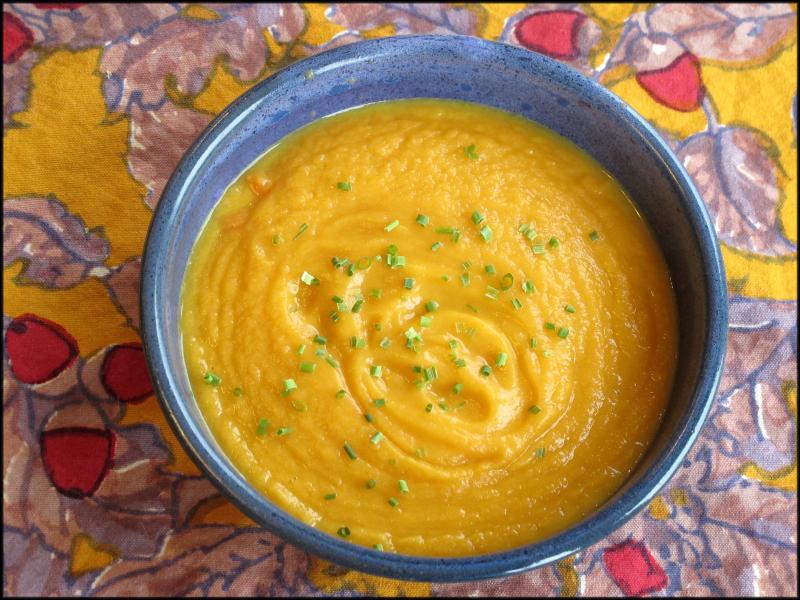Saffron can spice up a variety of recipes
A recent blog post from Diaspora Co. (diasporaco.com) featured one of its newest offerings, Kashmiri saffron. By way of background, saffron is the world’s most expensive spice, and the saffron grown in the Indian region of Kashmir is considered the finest available. The price of saffron is so high because the spice can only be collected from the stigma of a single variety of flower, the blue saffron crocus.
Each threadlike strand must be picked by hand as soon as the flowers open, and over 80,000 flowers are required to produce just one pound of saffron. These numbers explain why saffron is typically sold by the gram, at prices ranging from $10 to $20 for each tiny plastic case or glass vial. If you find it offered at a lower price, you are likely looking at a package of turmeric, which shares saffron’s characteristic yellow color when added to food.
Saffron has been around since the beginning of civilization as a dye, seasoning, medicinal herb and beauty treatment. The ancient Greeks used saffron to scent and purify their temples; ancient Romans bathed in saffron water, and Cleopatra is reported to have used it in a facial mask. By medieval times, saffron was widely used to imbue cloth with its signature yellow-orange hue, a favorite of royalty and nobility.
Most cookbooks from this period, primarily written by those of wealth and power to advertise their position in society, include saffron in almost all their recipes. While multiple myths and food historians fail to agree about the origins of Kashmiri saffron, it has been cultivated in the region for centuries and is an integral element in Indian cuisine.
The deep-red colored saffron threads can only impart their flavor, color and aroma to food after they have been “bloomed” or steeped in liquid. This is another telltale quality of the spice that will alert you to an imposter: If it fails to bleed color into the liquid within 10 minutes, you don’t have saffron. Most recipes call for grinding the saffron in a mortar and pestle, then mixing it with warm liquid and allowing it to steep.
Saffron from different regions will vary in flavor, with the Kashmiri-sourced spice sweetest in comparison. The aroma is often compared to an oak-aged wine, and it has a floral-honey flavor with a slightly bitter, lingering aftertaste. The latter quality is why less is best when using saffron, with recipes typically calling for a “pinch” of saffron threads. Once added to liquid, its flavor intensifies, making the small amount sufficient.
Your sealed container of saffron will keep in a dry, dark place for at least three years. Do not store it in the refrigerator or freezer; it will lose all its flavor. Don’t try infusing saffron in oil, as the slick coating will trap the volatile compounds in the strands. There are a few recipes in which you can add saffron without blooming it first. Dishes like bouillabaisse and risotto, which have enough liquid for the saffron, fall into this category.
The most common recipes made with saffron are steamed Basmati rice, Persian chicken kebob and Spanish paella. On the sweet list, you will find saffron added to cakes, puddings and breads. Saffron tea has many varieties, from simple infusions to milky, highly spiced versions. Soup is a great destination for saffron, adding both color and subtle flavor.
For the soup in the photo, I combined chopped turnips, leeks and carrots with a saffron-infused vegetable broth. Once everything had cooked enough to soften, an immersion blender pureed the mixture. A splash of half and half, a scattering of snipped chives and a sprinkle of salt are the final touches to this creamy treat.
Saffron Cream Soup
pinch saffron
1/2 C hot water
2 T unsalted butter
1 small turnip
3 carrots
2 leeks
3 C vegetable broth
1 bay leaf
1/2 C half & half
salt, to taste
snipped chives, for garnish
Grind the saffron with a mortar and pestle. Combine with water in a small bowl; set aside for at least 10 minutes. Melt the butter over medium-low heat in a saucepan. Peel the turnip and chop into 1-inch pieces; add to the pan. Peel the carrots and chop into 1-inch rounds; add to the pan. Trim the outer leaves from the leeks and wash carefully to remove trapped dirt. Chop into 1/2-inch slices, using only the white part; add to the pan. Stir the vegetables and add the broth, scraping up any browned bits from the bottom of the pan. Add bay leaf and saffron mixture. Cover, reduce heat to low and simmer until vegetables are tender, about 25 minutes. Remove bay leaf and use an immersion blender to puree the mixture thoroughly. Whisk in half & half and season to taste with salt. Ladle into soup bowls and garnish with snipped chives. Yield: 4 servings.
Saffron Chicken Skewers
pinch saffron
1/4 C hot water
1 1/2 lbs chicken breast
1 C plain Greek yogurt
1/4 C olive oil
2 T lemon juice
1 chopped onion
1 t salt
Grind the saffron threads in a mortar and pestle. Combine with hot water in a small bowl; set aside for at least 10 minutes. Cube the chicken into 1 1/2-inch pieces; place in a zip-top bag. Combine the remaining ingredients in a mixing bowl and whisk to combine thoroughly. Stir in the saffron and water. Pour the mixture into the bag over the chicken. Press out excess air and seal. Turn the bag over several times to ensure the chicken is covered completely with marinade. Refrigerate for at least 4 hours or overnight. Remove bag and allow to return to room temperature before cooking. Thread chicken pieces onto skewer and grill, turning once. Alternatively, heat 2 T olive oil in a skillet and cook chicken pieces for 3 minutes on each side, turning once.





















































